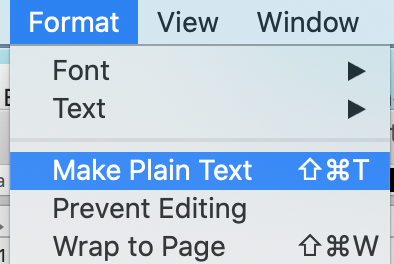
- #HOW TO USE TEXTEDIT MAC MOJAVE TO RUN SCRIPTS HOW TO#
- #HOW TO USE TEXTEDIT MAC MOJAVE TO RUN SCRIPTS FOR MAC#
- #HOW TO USE TEXTEDIT MAC MOJAVE TO RUN SCRIPTS UPDATE#
- #HOW TO USE TEXTEDIT MAC MOJAVE TO RUN SCRIPTS PASSWORD#
Older macOS versions turned the Dock and menu bar dark, but window chrome and the web only had light modes. There are also ways to quickly toggle between light or dark themes and set specific apps to their own theme. This is based on sunset and sunrise by default. The new OS version lets you schedule when Dark Mode is activated.

#HOW TO USE TEXTEDIT MAC MOJAVE TO RUN SCRIPTS UPDATE#
The new macOS Catalina release is a software update that improves how Dark Mode works with new features.
#HOW TO USE TEXTEDIT MAC MOJAVE TO RUN SCRIPTS FOR MAC#
You can also use CleanMyMac X to remove malware, unwanted pop-ups, and virus extensions.ĭark Mode for Mac premiered in macOS Mojave as a simple way to toggle the system appearance from the default bright theme. Find hidden junk, large old folders, unused apps, and heavy memory consumers. Do not change this entry.Ģ55.255.255.9to5Mac is brought to you by CleanMyMac X. # localhost is used to configure the loopback interface

#HOW TO USE TEXTEDIT MAC MOJAVE TO RUN SCRIPTS HOW TO#
If you ever make a mistake and you’re not sure how to fix it, you can always restore the default hosts file contents by using one of the methods above to enter the following default information: Our examples mentioned blocking and redirecting distracting sites in a work environment but you can also use these steps to manually block access to malicious websites and, of course, other uses as well. When you’re done making changes, press Control-X to exit the editor, Y to save, and Return to overwrite the existing hosts file.Īs we mentioned earlier, make sure to flush your DNS cache if you notice that your new mappings aren’t working properly. Because we launched Nano using sudo, any changes will be authenticated and saved directly to the original hosts file, without the need to copy it outside of its home directory.Ĥ. Just as we did with the TextEdit method above, we can add, edit, or remove hostname mappings at will. To navigate and edit the file in Nano, use the arrow keys on your keyboard.ģ. You’ll now see the hosts file open in the Nano editor or vim or another editor of your choice.
#HOW TO USE TEXTEDIT MAC MOJAVE TO RUN SCRIPTS PASSWORD#
As with all sudo commands, you’ll need to also enter your admin password to execute it: " sudo nano /private/etc/hosts“Ģ.

Note: You will need to enter your admin password to execute this command. Now, type “ sudo killall -HUP mDNSResponder” and press Return.To flush the DNS cache on your Mac, open Terminal and use the following command (sudo enables you to run this command as the admin of your machine):.In most cases, the new mapping should work immediately, but if you’re not seeing the correct behavior, you may need to flush your DNS cache, forcing the browser to read from your hosts file to determine the mapping.

With the modified hosts file now in place, fire up your Web browser to test the changes. Choose Replace and then enter your administrative user password to authenticate the transfer. When you drop the hosts file back in its original location, macOS will ask you what to do about the unmodified hosts file that’s already there.


 0 kommentar(er)
0 kommentar(er)
